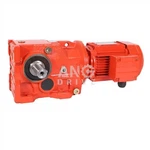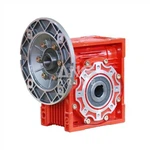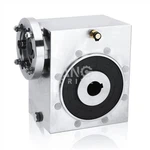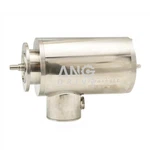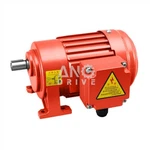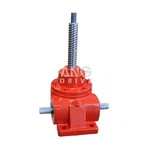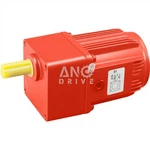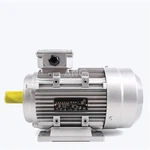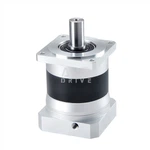R series coaxial reducer
Features of box gear:
1. Compact structure and simple assembly;
2. Wide speed ranges and high torque;
3. Low noise, good sealing performance, high efficiency;
4. Stable and safe, long lifetime, universal;
5. Multi-structure, various assembling methods
Specification for box gear:
|
ANG Helical Gear Motor |
|
|
Model |
R17 ~ 187, F37-177, K37-187, S37-97 |
|
Input power |
0.06kW ~ 250kW |
|
Input speed |
750rpm ~ 3000rpm |
|
Reduction ratio |
1/1.3 ~ 1/27000 |
|
Input motor |
AC (1 phase or 3 phase) / DC / BLDC motor |
|
Install type |
Foot / Solid shaft / Hollow shaft / Output flange… |
|
Efficiency |
94% ~ 98 % for R F K series |
|
Material of housing |
die-cast aluminum / Cast iron / Stainless steel |
|
Precision of gear |
Accurate grinding, class 6 |
|
Heat treatment |
Carburizing and quenching |
|
Accessories |
Brake / Flange / Motor adapter / Torque arm … |
FAQ of box gear
Q:What cause gearbox damage?
A:Here are some of the most common forms of gearbox failure. The major cause is inadequate lubrication caused by under filling, incorrect specification, mixing or incompatibility, incorrect lubrication and intervals, deteriorated grease or oil, water contamination and particulate contamination.
Q:Can gearbox be reqaired ?
A:If your gearbox is down, you need it up and running as quickly and efficiently as possible. Repairing an existing gearbox can be a quick and cost effective way of bringing your process availability back to 100%, compared with a replacement unit.
Q: Can you make the gearbox with customization?
A: Yes, we can customize per your request, like flange, shaft, configuration, material, etc.
Q: Do you provide technical support?
A: Yes. Our company has a design and development team, we can provide technical support if you
need it.
The simplest transmissions, often called box gear to reflect their simplicity (although complex systems are also called gearboxes in the vernacular), provide gear reduction (or, more rarely, an increase in speed), sometimes in conjunction with a right-angle change in direction of the shaft (typically in helicopters, see picture). These are often used on PTO-powered agricultural equipment since the axial PTO shaft is at odds with the usual need for the driven shaft, which is either vertical (as with rotary mowers), or horizontally extending from one side of the implement to another (as with manure spreaders, flail mowers, and forage wagons). More complex equipment, such as silage choppers and snowblowers, have drives with outputs in more than one direction. So too Helicopters use a split-torque gearbox where power is taken from the engine in two directions for the different rotors.
Regardless of where they are used, these simple transmissions all share an important feature: the gear ratio cannot be changed during use. It is fixed at the time the transmission is constructed. The gearbox in a wind turbine converts the slow, high-torque rotation of the turbine into a much faster rotation of the electrical generator. These are much larger and more complicated than the PTO gearboxes in farm equipment. They weigh several tons and typically contain three stages to achieve an overall gear ratio from 40:1 to over 100:1, depending on the size of the turbine. (For aerodynamic and structural reasons, larger turbines have to turn more slowly, but the generators all have to rotate at similar speeds of several thousand rpm.) The first stage of the gearbox is usually a planetary gear, for compactness, and to distribute the enormous torque of the turbine over more teeth of the low-speed shaft. The durability of these gearboxes has been a serious problem for a long time.
For transmission types that overcome this issue, see continuously variable transmission, also known as CVT.
Hot Tags: R series coaxial reducer, China, suppliers, manufacturers, factory, wholesale, price
Previous
BLDC Brushless MotorYou Might Also Like
Send Inquiry

